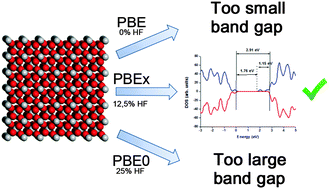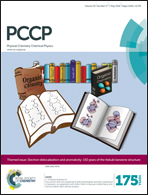Performance of a modified hybrid functional in the simultaneous description of stoichiometric and reduced TiO2 polymorphs†
Abstract
Conventional density functionals with either the local density approximation (LDA) or the generalized gradient approximation (GGA) form of the exchange–correlation potential fail to describe the electronic structure of a large number of metal oxides. Both the LDA and the GGA grossly underestimate the band gaps of these materials which severely affect the description of oxygen vacancy point defect states in reduced samples. To find a pragmatic approach to simultaneously and accurately describe the atomic and electronic structures of the most common TiO2 polymorphs, we explore the effect of the percentage of exact, non-local, Fock exchange on the electronic structure of stoichiometric rutile and anatase. From these results, a modified hybrid functional is proposed to properly describe the atomic structures, formation enthalpies and electronic structures of rutile and anatase and, at the same time, the results of reduced samples are also in good agreement with the available experimental results. The present approach can be safely used to accurately describe numerous TiO2 based materials containing defects or realistic nanoparticles for which the required large unit cells or system sizes hinder the use of GW related techniques.


 Please wait while we load your content...
Please wait while we load your content...